
Guide
Create your own knotted plant hanger
by Natalie Hemengül
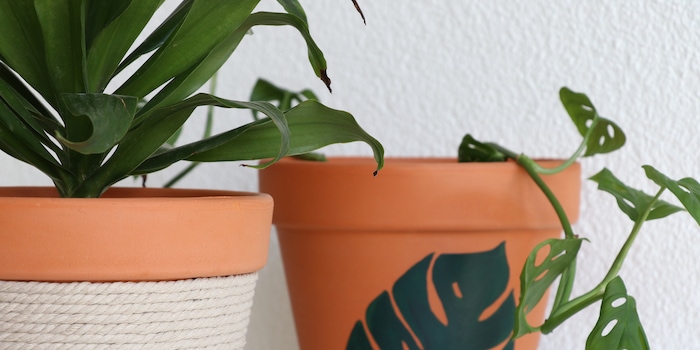
Clay pots are as exciting as watching grass grow. Unless you upgrade them. Keep reading to find out five ideas on how to turn them into real show stoppers.
Nothing is more run-of-the-mill. Terracotta-coloured clay pots are the biggest bore of the gardening scene, yet they’re in almost every home. Even in mine. They sneaked their way into my home disguised as souvenirs. I’ve always been reluctant to put my plants in them – until I saw on Pinterest that with a little creativity they can become the pots of my dreams.
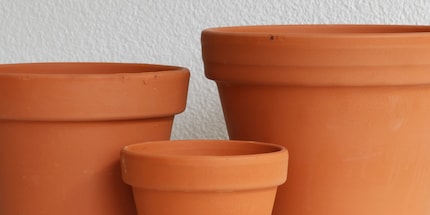
Here are five makeover ideas that are so simple I never would have thought of them myself.
It’s so obvious. Yet, it wasn’t until this Pinterest post that I got the idea to paint my clay pots with waterproof acrylic paint. Whether large-scale, patterned or only individual motifs: brushes and paints are the best way to personalise pots and match them to the colours of your interior.
What you need:
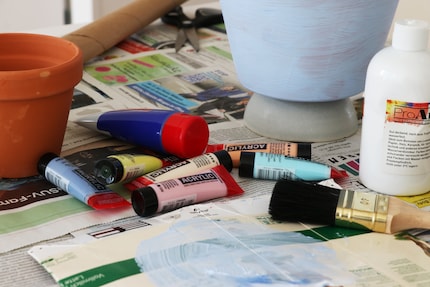
You can choose acrylic paints that contrasts the green tone of your plant, for example. Or you can paint on patterns that look similar to the shape of your plant leaves. Anything is possible. Create images by selecting a picture on the Internet, printing it out and cutting it to size. Then use the template as a stencil, place it on the pot and trace the outline in pencil, colour in and done.
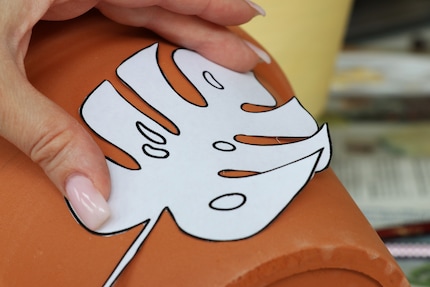
At least two coats are necessary for an opaque result. Keep this in mind when mixing extra colours.
Design the saucers too. If you’re painting their underside, I’d play it safe and add some felt glides after they dry. This will prevent the colour from rubbing off onto the surface or shelf later on due to being moved around or constantly getting wet.
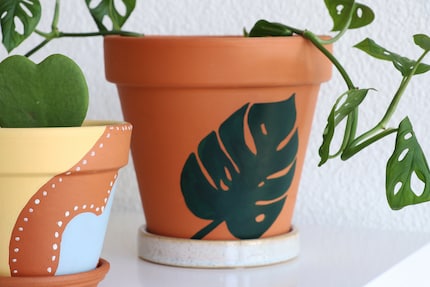
With a twist and turn, you’ll not only give the smooth clay a textured and cosier look, but also a comfortable feel.
What you need:
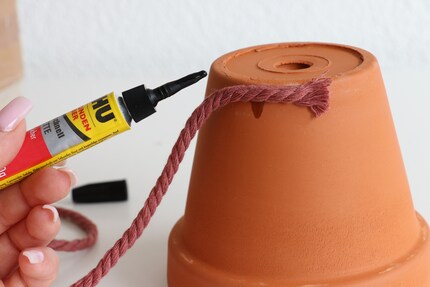
Place your pot upside down and work your way down from the top, using a liquid superglue to glue the twine to the clay pot. This works best if you tackle four to eight centimetres at a time. To do this, first put some of the super glue on the pot and press on the twine – make sure you create some tension and the twine isn’t too lose. Wait until it sticks. Then it’s the next few centimetres and so on and so forth, until you’ve spiralled completely around the pot and reached the slightly overhanging edge.
It’s important that you always tighten the twine and at the same time push it tightly against the upper, already glued row when sticking it on. This is how you avoid gaps. You’ll make faster progress with a liquid superglue than with a viscous one because it doesn’t pull threads. If your twine is too thin, you can braid it beforehand. This way it gains thickness, and you visually add more movement.
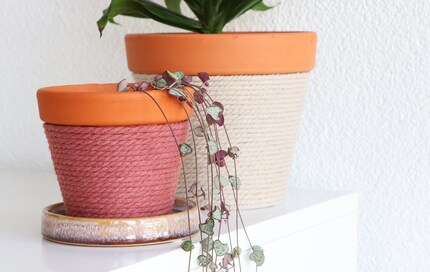
Macramé is time-consuming, but not complicated. I’ve made myself many a plant hanger with this knotting technique. Find out how I went about it in this article:
Usually, you first place a planter in macramé plant hangers, along with an inner pot and the plant. Clay pots, on the contrary, are the outer and inner pot at the same time and have only a small hole at the bottom, through which excess water drains. So they must be used with a coaster. If you take one that fits as closely as possible, you can easily place the pot including the coaster in the hanger and hang it.
Mosaic stones are weatherproof and are particularly suitable for outdoor use.
What you need:
First, pick out all the stones and shards that suit your idea. That way you make sure you have enough of one colour and can place them side by side to see how they match up. Next, glue them to the pot with a thick super glue.
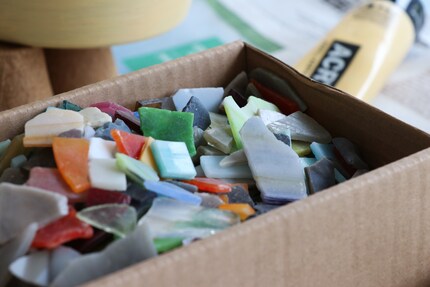
My monotone patio was in dire need of some colour. I painted my pot light blue first and arranged mosaic tiles in rainbow order and glued them down.
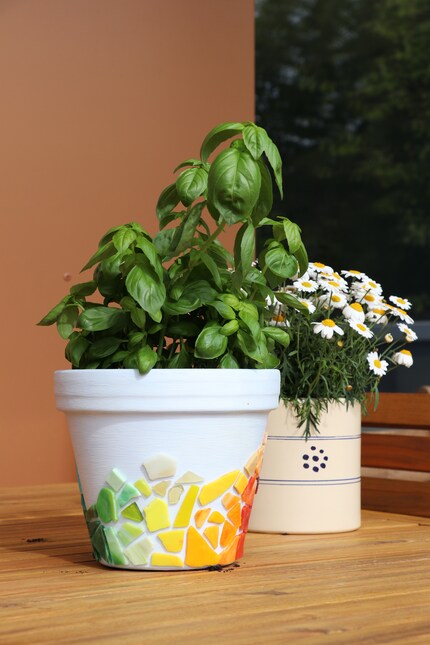
Sometimes, you’re lucky and the clay pot fits seamlessly into your interior design vision. In such a case, set accents with little highlights. Small trinkets like shells from your last beach vacation, glass marbles or crystals make for great decorations. Place them on the ground next to your plant.
But be careful: regular watering will cause small stuff to burrow deeper and deeper into the soil over time. Therefore, check occasionally whether the objects can still be seen, so they don’t «get lost» in the pot. Change the coasters up: simply combine your clay pot with a coaster made of a different material. You’re sure to find something at flea markets or second-hand shops.
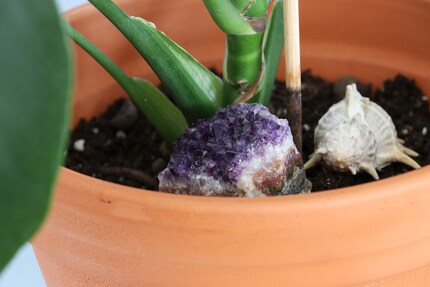
After so much crafting, I’m almost ready to denounce clay pots their status as most boring object in the gardening scene. You have to admit one thing: they’re super versatile!
As a massive Disney fan, I see the world through rose-tinted glasses. I worship series from the 90s and consider mermaids a religion. When I’m not dancing in glitter rain, I’m either hanging out at pyjama parties or sitting at my make-up table. P.S. I love you, bacon, garlic and onions.
Practical solutions for everyday problems with technology, household hacks and much more.
Show all